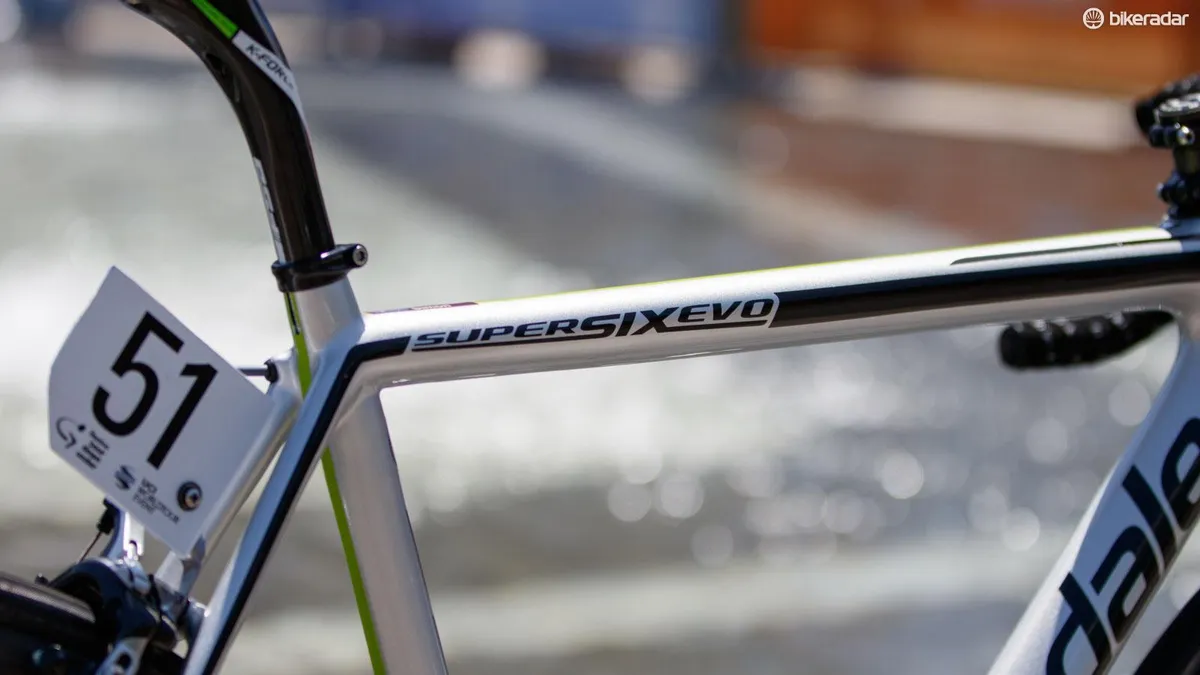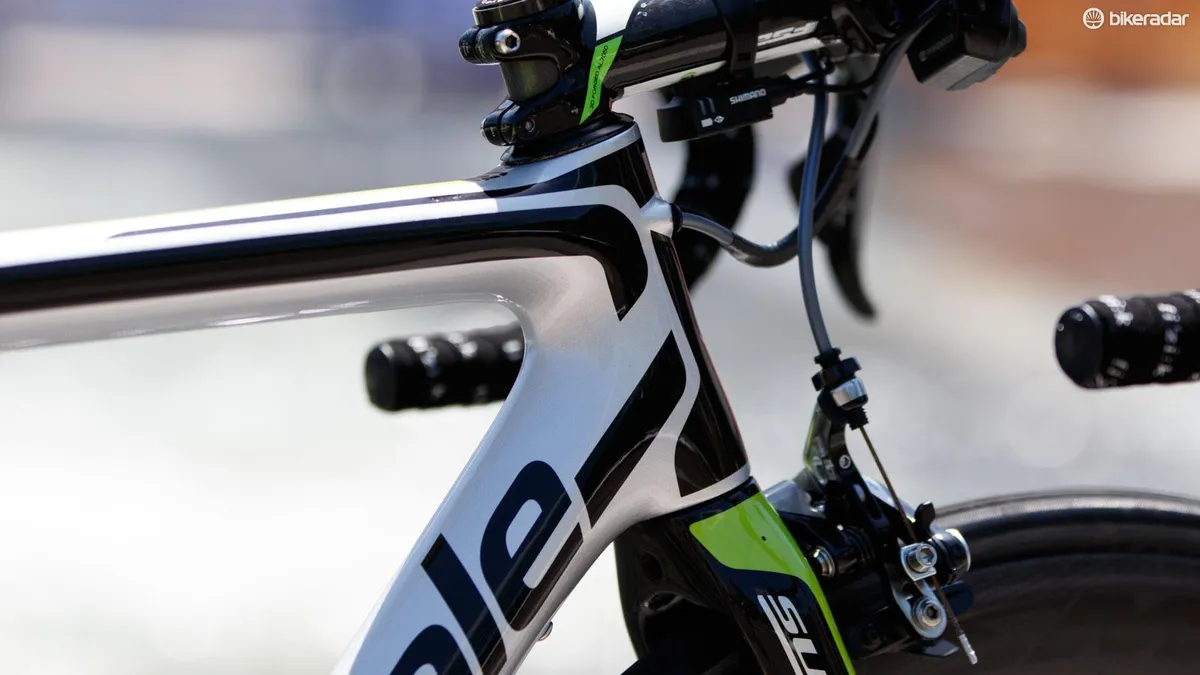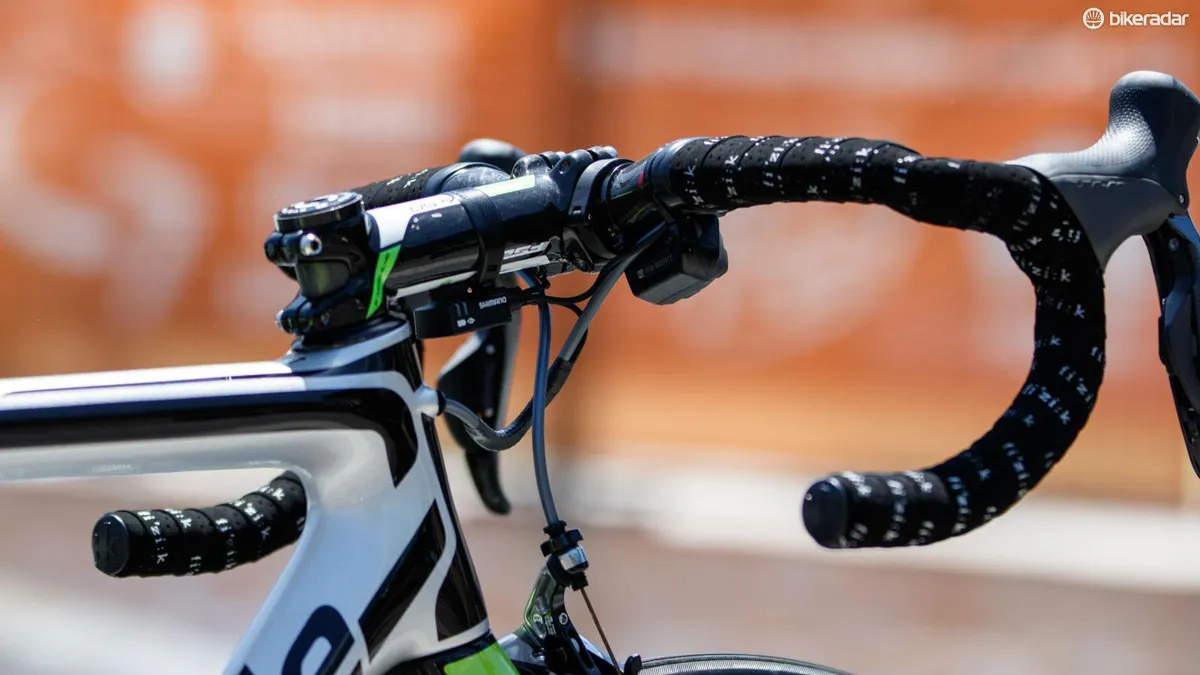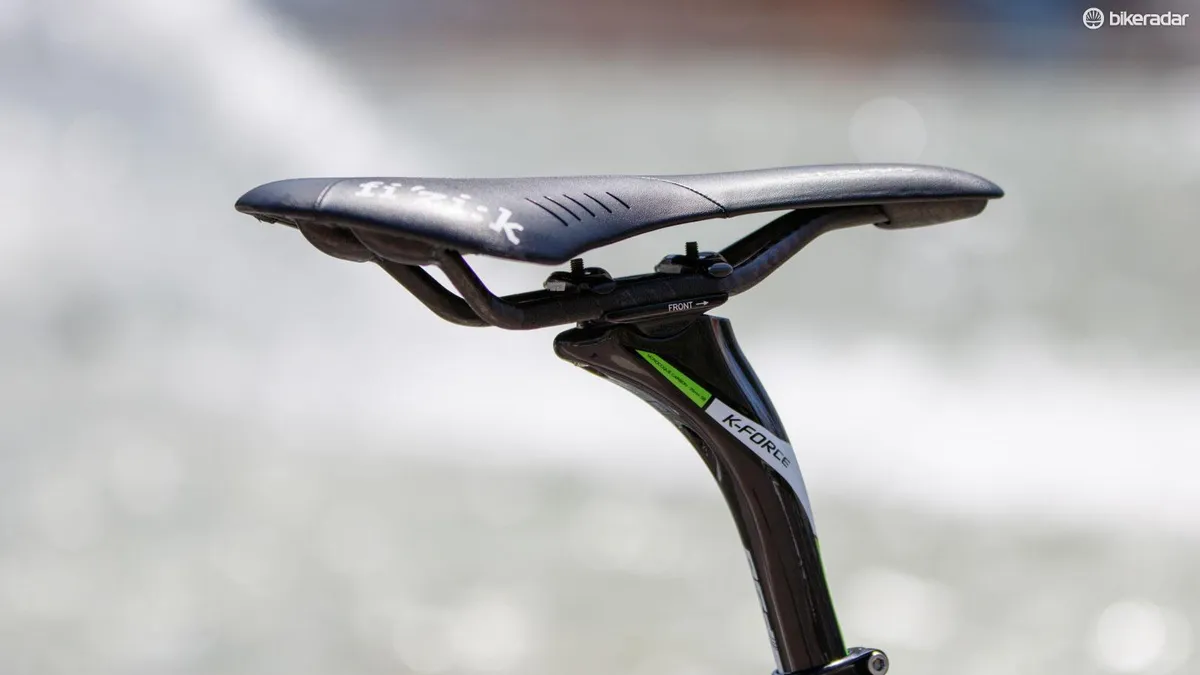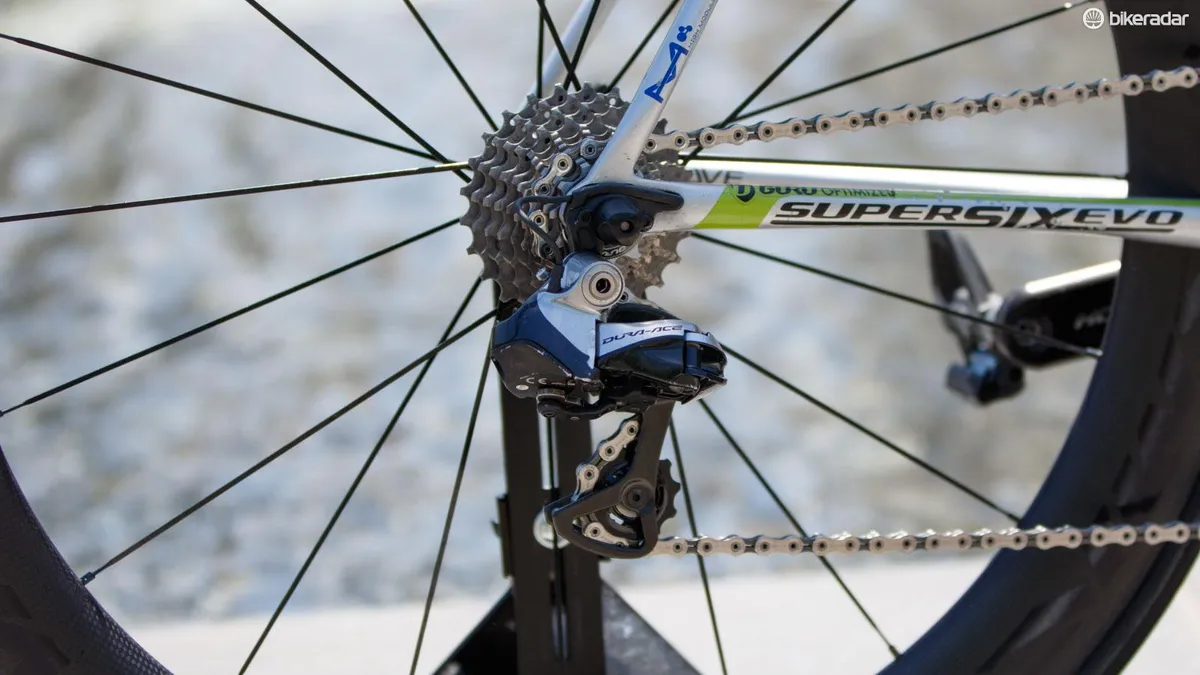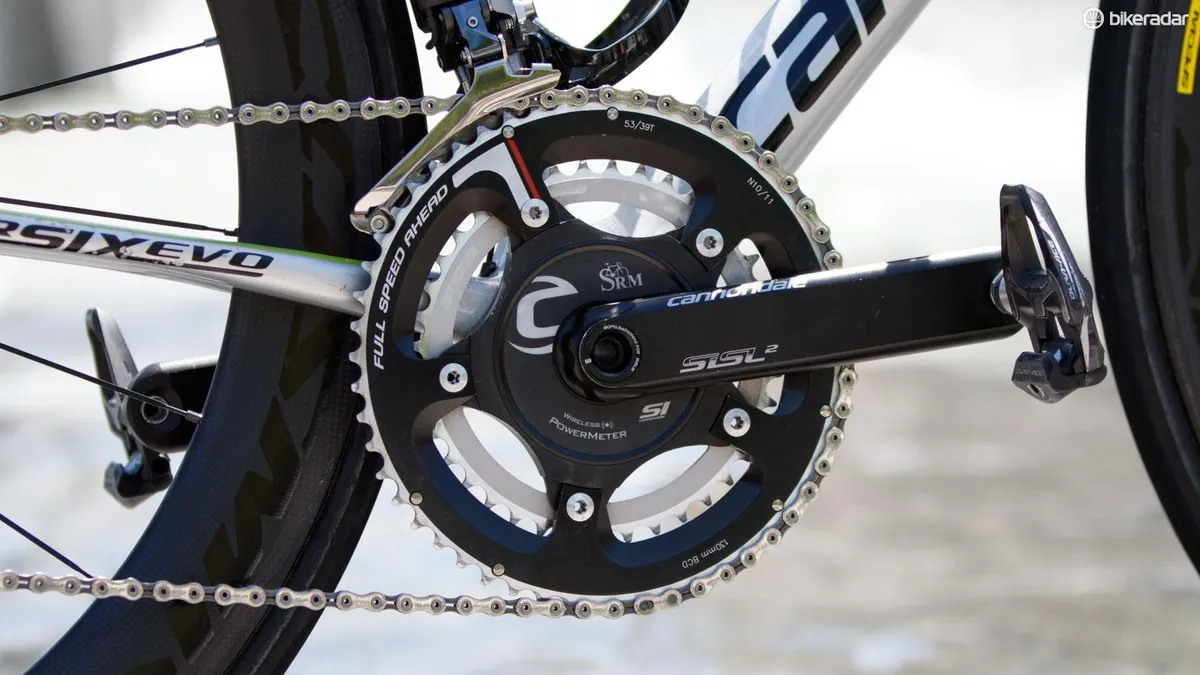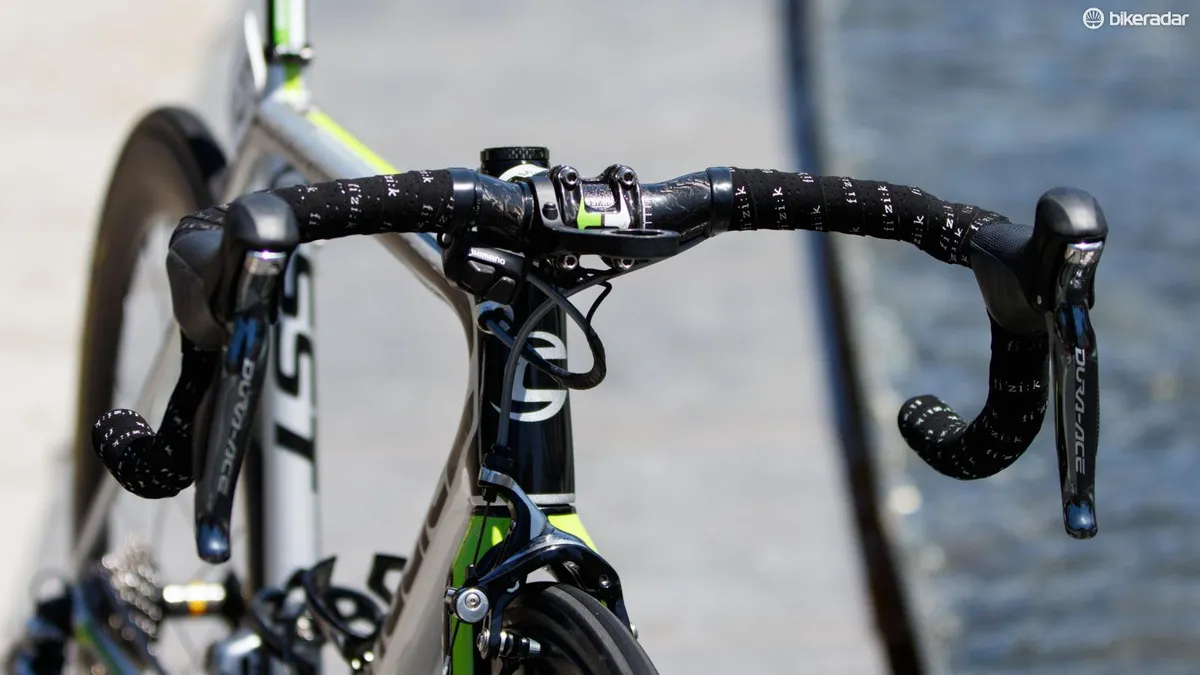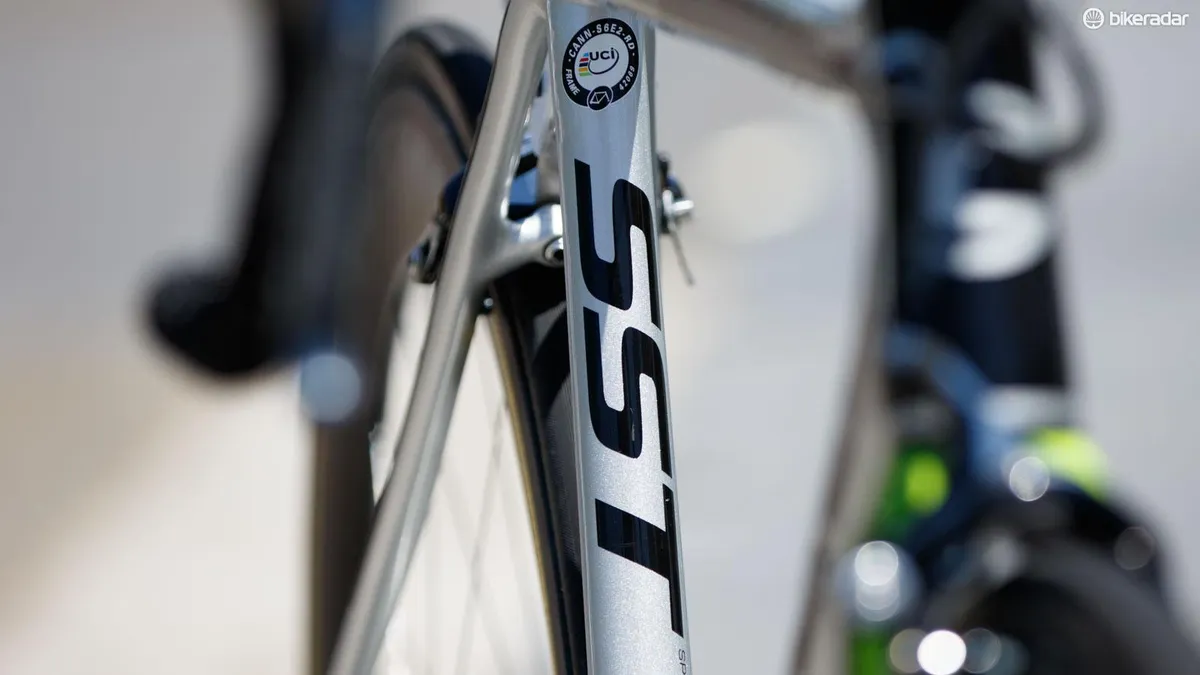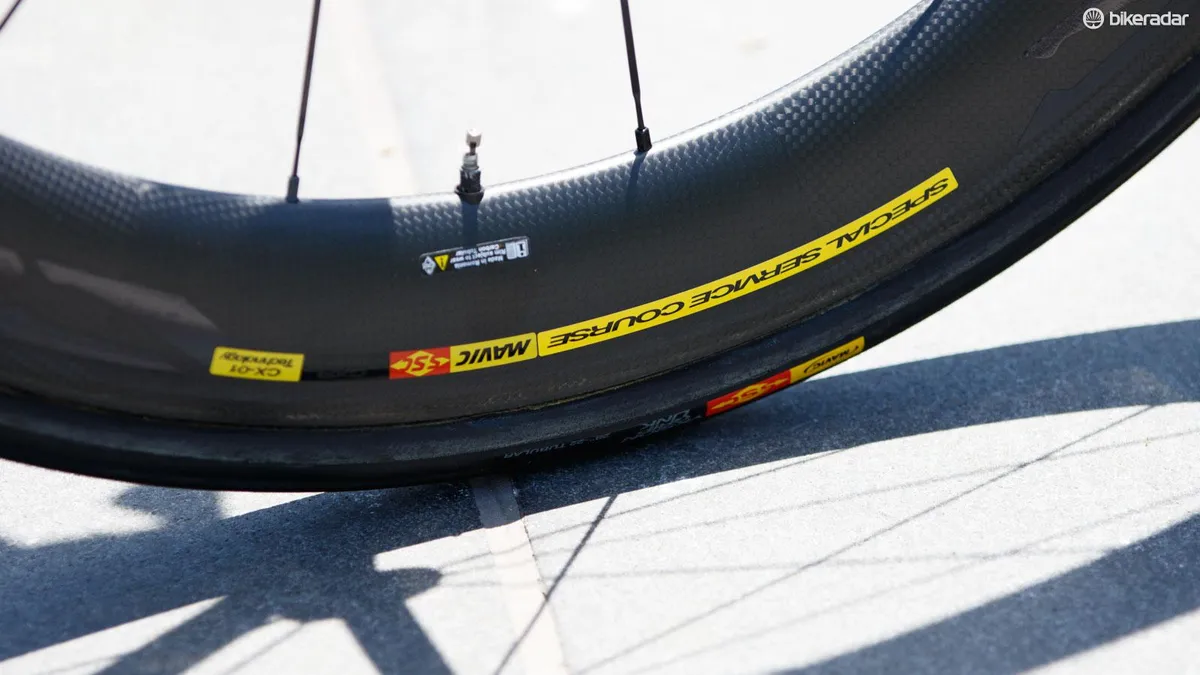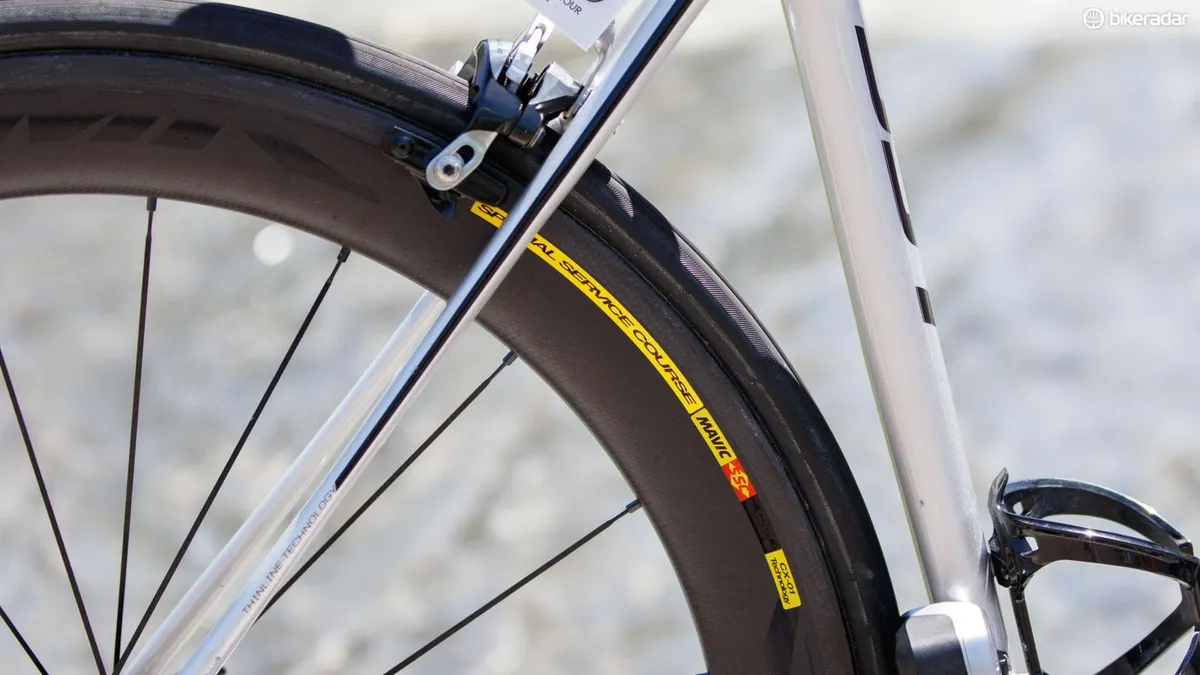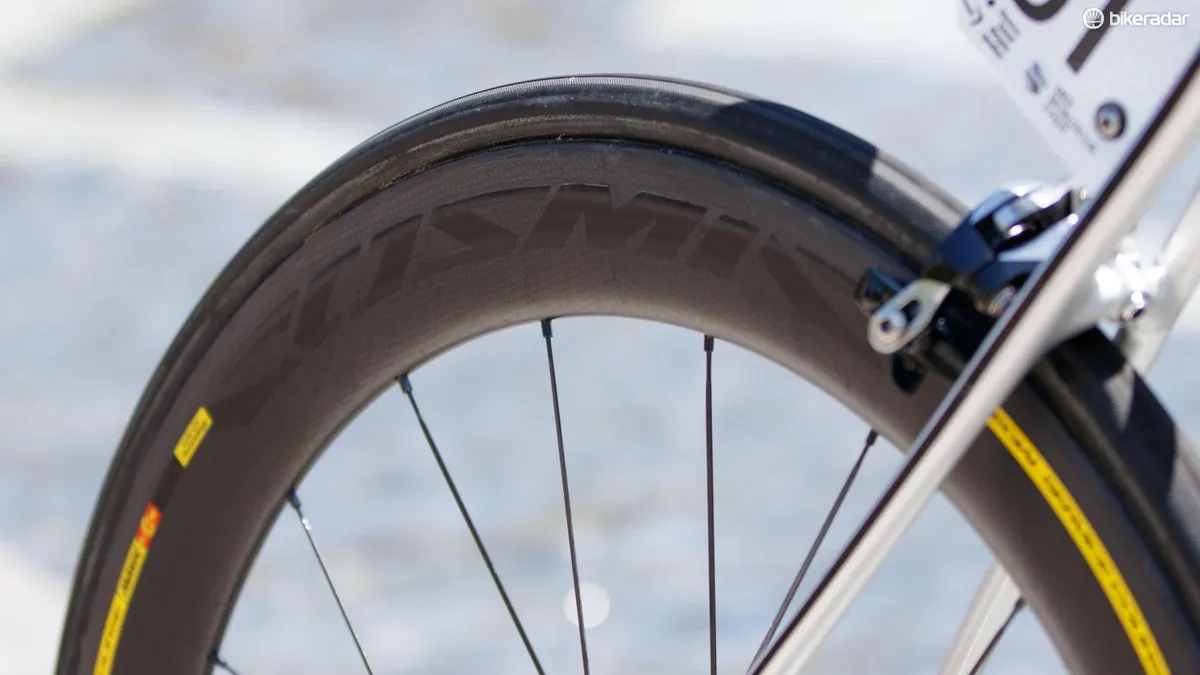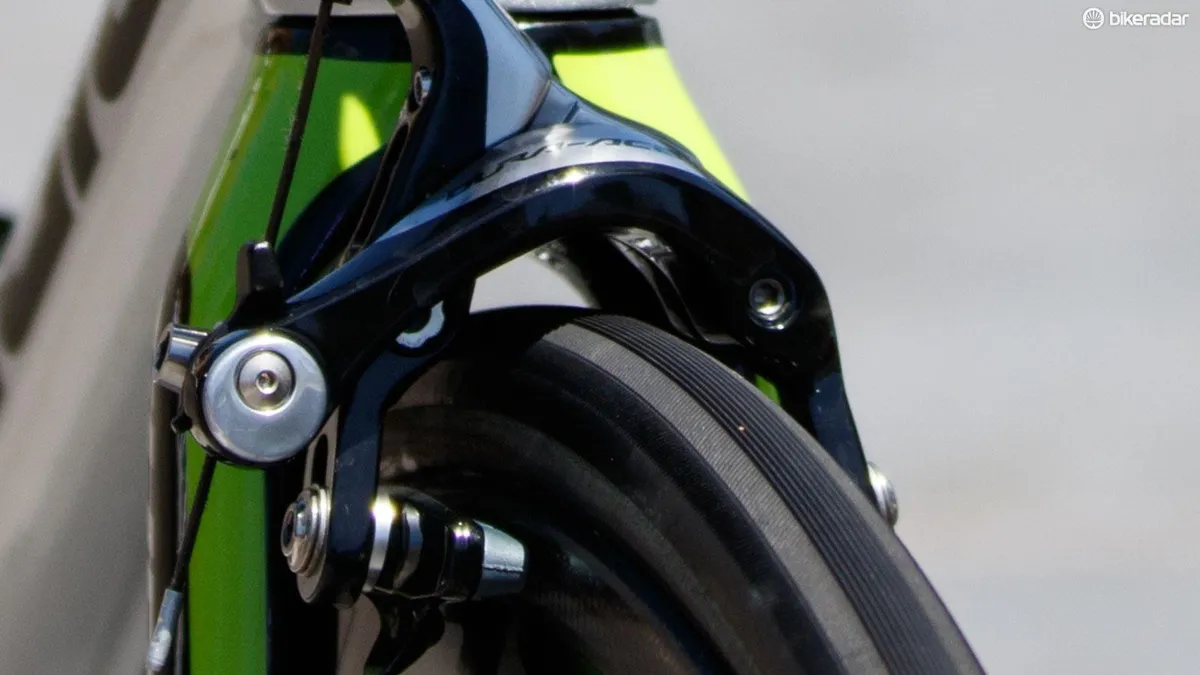Having spent the last four years winning races and stages with Orica-GreenEdge, 2016 marks the move of Australian Simon Clarke to the refreshed Cannondale Pro Cycling team.
Having won a stage in each of the three Grand Tours (two were team time trial wins), Clarke has done something few cyclists can claim. With a new team and more freedom, Clarke now has his sights set on the Spring Classics such as Milan-Sanremo and Liège-Bastogne-Liège, events he previously supported the likes of Simon Gerrans in.
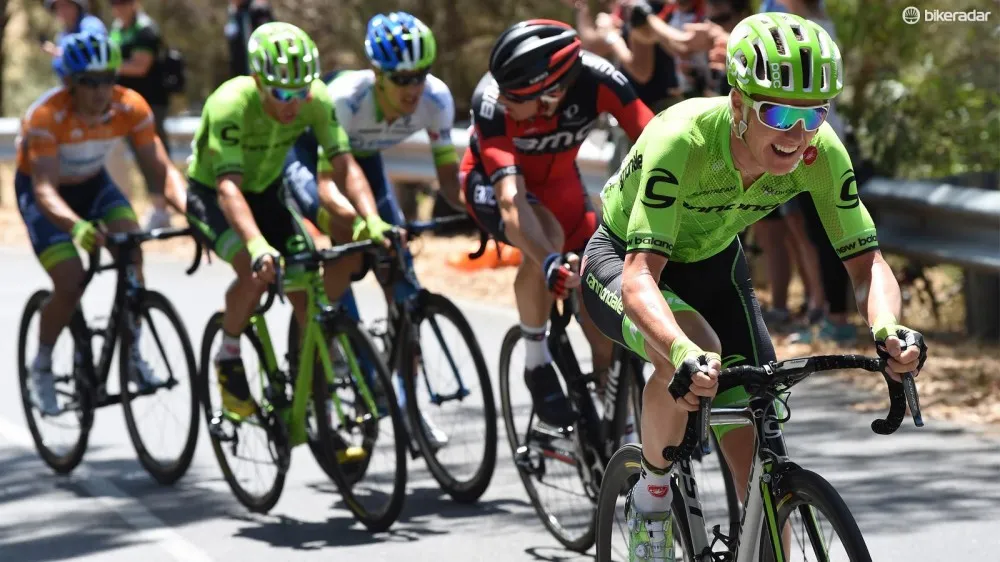
Simon Clarke on the front at the 2016 Tour Down Under with teammates, former and current, in tow
With a new team comes a new bike, and Clarke has traded in his Scott Addict and Foil for Cannondale’s latest – the SuperSix EVO Hi-Mod. It’s a bike that’s far more similar to the low weight and smoother ride of his previous Scott Addict than the aero rocket that is the Foil.
Interestingly, there is a clear connection between the original Scott Addict and Cannondale’s SuperSix EVO, and that’s engineer Peter Denk. Although the renowned German has since moved on, his influence still shows in both companies' bikes.
Hi-Mod – just a snappy way of saying high-modulus
The Cannondale SuperSix EVO Hi-Mod is new for 2016, and comes with familiar claims that it’s now stiffer, smoother and with reduced wind drag compared with its ancestors. Stiffness-wise, Cannondale claims that bottom bracket and head tube stiffness have increased by 11% and 12% respectively.
Related reading: Cannondale’s new SuperSix EVO Hi-Mod
Increased ride comfort comes via the tuning of the seatstays and fork, and the use of a skinny 25.4mm seatpost. With such figures as 15% more compliance in the rear of the frame, 21% increase in fork fore-aft deflection and a whopping 36% increase in deflection from the skinnier seatpost. Adding to this, the bike’s bottom bracket height has been dropped to cater for the use of wider 25c rubber.
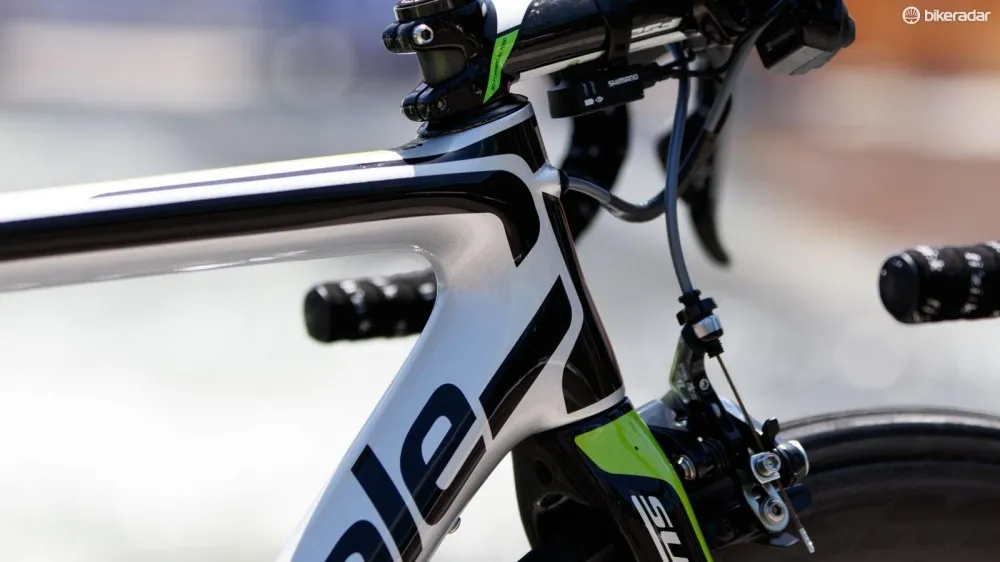
Aero profiles are extremely subtle, but Cannondale claims there's been a measurable decrease in drag
Cannondale has joined a number of brands in using truncated aero profiles to reduce frontal drag. It’s arguably still not a true aero bike, but every bit helps, right?
Standing at 1.75m, Clarke is riding a 52cm frame size. With the frame’s relatively short 125mm head tube length, Clarke’s setup looks rather ‘normal’ among the many ultra-aggressive ones seen in the pro peloton.
Cannondale, SRM, FSA and Shimano mix
Cannondale Pro Cycling is one of the few WorldTour teams that for a long time have done without an official drivetrain sponsor. We're told that this changes for 2016, with FSA coming onboard. However, as the Italian-brand's wireless shifting system is still in development, the Cannondale team is currently using 11-speed Shimano Dura-Ace Di2.
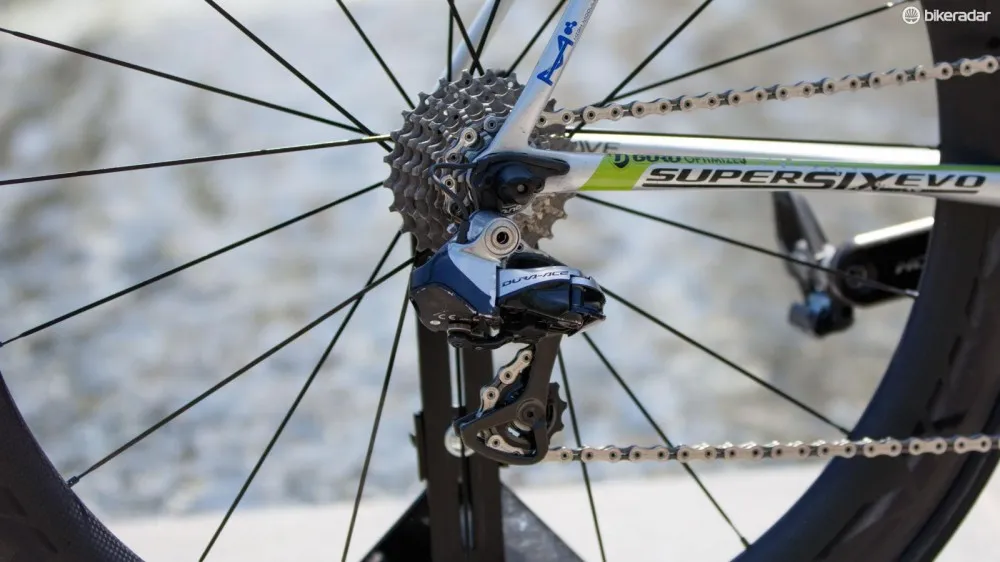
That ain't new...
When the team is paying for it, you can bet they’ll get their use from it. Such an example are the noticeable scratches to Clarke’s Dura-Ace Di2 rear derailleur, something that obviously doesn’t affect function.
Allowing shifting from the tops of the bars, Clarke uses a SW-R600 climber satellite rear shifter that’s placed in an unusual forward-facing position.
Where Shimano-sponsored teams are required to use complete groupsets, Cannondale is free to mix and match. With this, the team uses Cannondale’s own impressively stiff and light SISL2 30mm crank with FSA chainrings. The 11-speed chain is also from the house of FSA.
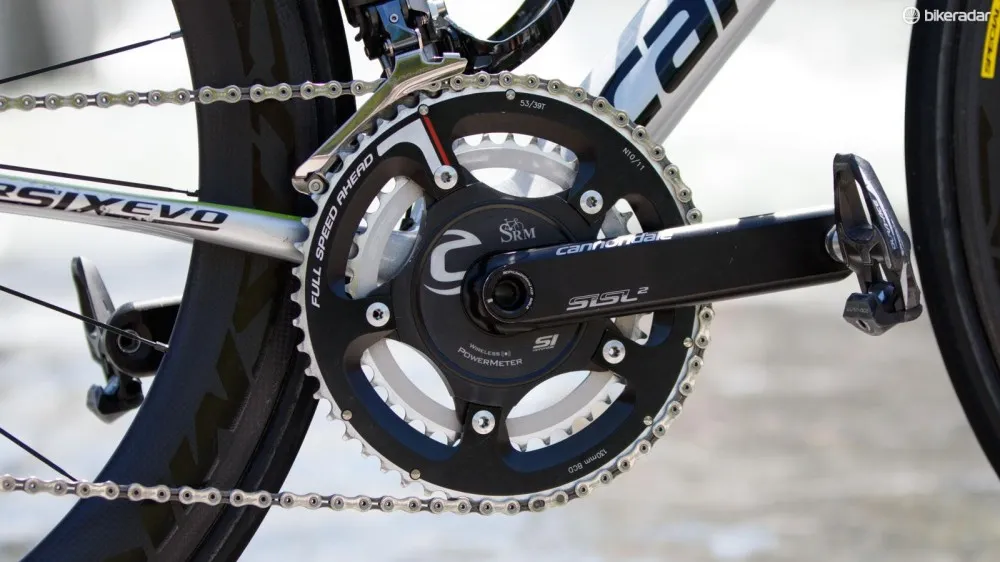
SRM power metering for Clarke
Sitting at the axis of Clarke’s crankset is an SRM power meter – interesting, as the team is still sponsored by Garmin and so should in theory be on the Vector power meter. However, this is nothing new, and previous years we’ve seen certain riders use SRM power meters and Shimano pedals even where Garmin was a title sponsor.

An unusual looking Vision Metron carbon bar sits up front
Handlebars are always a personal preference, and Clarke’s choice is an uncommon one in the Vision Metron bar. A sister brand to FSA, this carbon Vision bar features a shape that rises above its clamp – not unlike a riser mountain bike handlebar. Looking to the compact-shaped drops, and there’s a noticeable flare-out of width beyond where the hoods sit.
When we photographed Clarke’s bike, it was set up with 60mm deep Mavic Cosmic tubular wheels. Labelled with team issue ‘Special Service Course’ stickers, we’re told the rear wheel is a stock affair (CXR Ultimate?), but the front features a special wider rim for use with a 25c tyre.
With that, Clarke’s bike was setup with a 23c tubular on the rear, and a wider 25c version on the front. Using a wider tyre on the front is commonly done in mountain biking, but it’s rare on the road. These tubulars appear to be Italian-made VeloFlex items rebadged as Mavic Yksion.
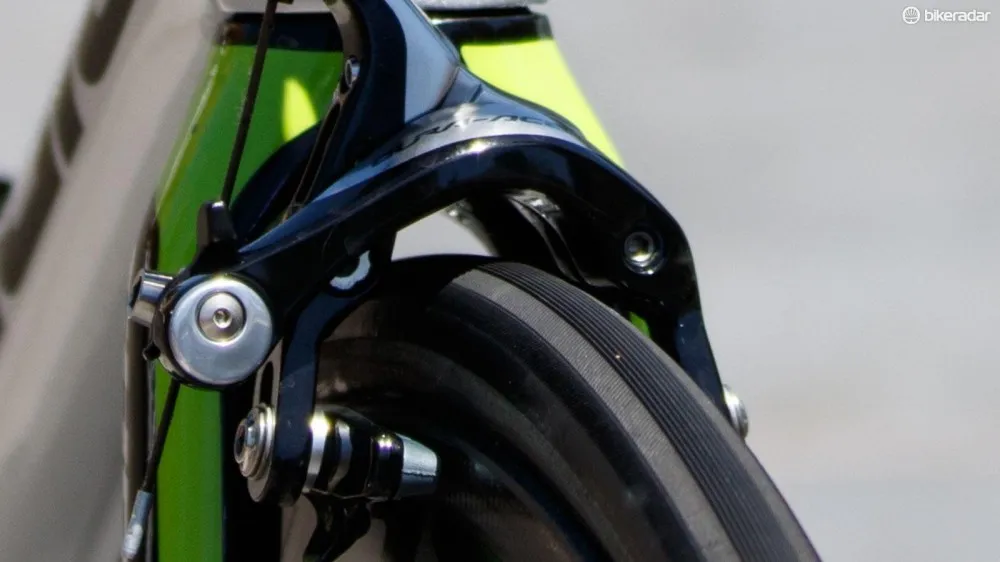
Yep, that looks like a VeloFlex
We’re told the lightweight Aussie swaps to the lighter Mavic Cosmic Carbon Ultimates for hillier stages, where we suspect his bike would fall extremely close to the 6.8kg legal weight limit.
Complete bike specifications
- Frame: Cannondale SuperSix EVO Hi-Mod, 52cm
- Fork: Cannondale SuperSix EVO, 1-1/8in to 1-1/4in tapered steerer
- Headset: Cannondale tapered
- Stem: FSA OS-99 CSI, 130mm, 6-degree
- Handlebar: Vision Metron 4D Compact, 40cm
- Tape: Fizik Superlight Soft Touch
- Front brake: Shimano Dura-Ace 9000
- Rear brake: Shimano Dura-Ace 9000
- Brake levers: Shimano Dura-Ace Di2 STI Dual Control ST-9070
- Front derailleur: Shimano Dura-Ace Di2 FD-9070
- Rear derailleur: Shimano Dura-Ace Di2 RD-9070
- Shift levers: Shimano Dura-Ace Di2 STI Dual Control ST-9070, plus Di2 SW-R600 Climbing shifter
- Cassette: Shimano Dura-Ace, 11-25t (11-28t for climbing stages)
- Chain: FSA Team Issue 11-speed
- Crankset: Cannondale SISL2 SRM, 172.5mm, FSA Super Type 53/39t chainrings
- Bottom bracket: BB30A, steel bearing
- Pedals: Shimano Dura-Ace
- Wheelset: Mavic ‘Special Service Course’ 60 Tubular
- Front tyre: ‘Mavic SSC’ tubular, 25mm
- Rear tyre: ‘Mavic SSC’ tubular, 23mm
- Saddle: Fizik Antares R1 Braided
- Seatpost: FSA K-Force SB25 25.4mm
- Bottle cages: Kinetic Twenty20 (2)
- Computer: Garmin Edge 520
Critical measurements
- Rider's height: 1.75m (5ft 9in)
- Rider's weight: 63kg (139lb)
- Saddle height from BB, c-t: 718mm
- Saddle setback: 70mm
- Tip of saddle to centre of bar: 577mm
- Saddle-to-bar drop: 65mm
- Head tube length: 125mm
- Top tube length (effective): 534mm
- Total bicycle weight: 7.14kg (15.85lb, as pictured, without computer)

